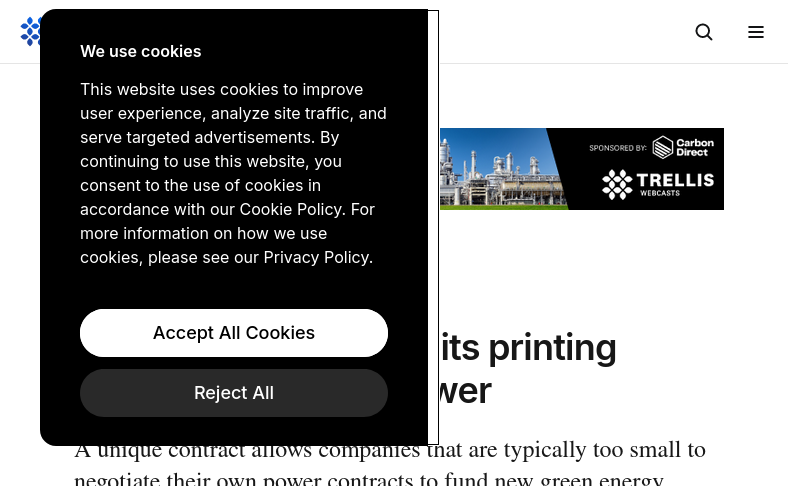you have the possibility to publish an article related to the theme of this page, and / or to this region:
New Zealand - -An information and promotions platform.
Links the content with your website for free.

New Zealand - Web content about Canva

A unique contract allows companies that are typically too small to negotiate their own power contracts to fund new green energy projects.
Graphics software company Canva has signed a unique solar energy procurement contract with sustainability services firm Watershed that will help its largest printing suppliers reduce their emissions.
The virtual power purchase agreement, co-funded by Canva and its printers, will support the construction of new community solar projects in Illinois.
The deal will help Canva cut Scope 3 emissions from its supply chain.
At the same time, the companies behind Canva Print—which lets users produce books and posters from their Canva designs—can claim cuts to their Scope 2 emissions, which include those generated by their electricity usage.
The companies won’t actually use the power in their own operations, however.
“What they are doing is matching the electricity emissions that they produce because of Canva,” said Matt Konieczny, head of clean power at Watershed.
The collective amount the companies will claim initially is 40,000 megawatt-hours annually, he said.
Excess electricity from the projects will be sold to local utilities so they can fund solar power for renters and low-income households that don’t traditionally have access to renewable energy.
Canva was the first Australian company to commit to reaching net-zero by 2040, made possible through waste reduction and purchases of carbon and renewable energy credits.
In January 2023, a group of companies including JPMorgan, Meta, and Stripe made advance purchases of early-stage carbon removal technologies.
But Canva’s fast growth makes reducing its Scope 3 emissions challenging.
The company has about 185 million monthly users and $2 billion in revenues.
That motivated discussions about a year ago, said Mike Williams, global head of sustainability at Canva.
“Print is an area that will continue to grow, which means our footprint will, as well,” Williams said.
Canva’s largest print suppliers—RPI Print, Taylor, Blooming Color, Brook & Whittle, and Digital on Demand—are all participating in the agreement.
“The pleasant reality is that all these partners share the interest and motivations,” Williams said.
“They just needed to know how.
” “We don’t have many other ways to offset that don’t feel like greenwashing,” RPI’s Cummins said.
“We have a lot of customers where sustainability is part of their mission.
” The contract offered a lower hurdle to buying into clean energy, said Rick Hanaway, senior vice president of sales and marketing for RPI Print.
“We didn’t have to start from scratch,” he said.